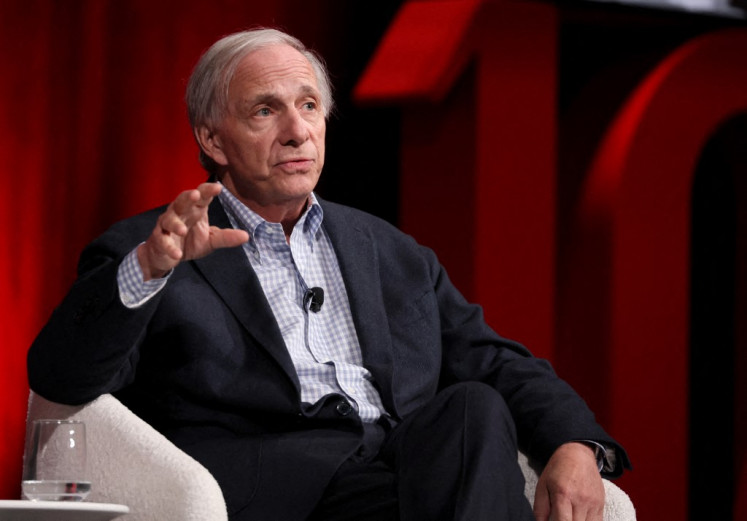Popular Reads
Top Results
Can't find what you're looking for?
View all search resultsPopular Reads
Top Results
Can't find what you're looking for?
View all search resultsAsian stocks defy Wall St selloff, charged by dogged China optimism
Change text size
Gift Premium Articles
to Anyone
A
sian stocks bucked the global trend to extend a rally on Thursday, fueled by persistent optimism over China's aggressive stimulus package, although there were signs some of that enthusiasm was starting to ebb.
The sea of green across equities in Asia came even as Wall Street closed lower overnight with global stock indexes giving up their gains from earlier in the week.
"After such a strong run in the past few days, one could argue the selling was largely driven by profit-taking, while others will suggest that it symbolizes a belief that the PBOC's policy stimulus is in no way a game changer and will fail to lift consumption in any capacity," said Chris Weston, head of research at Pepperstone.
Still, MSCI's broadest index of Asia-Pacific shares outside Japan rose more than 1 percent to an over two-year high on Thursday. Japan's Nikkei surged 2.4 percent.
Hong Kong's Hang Seng Index similarly advanced 1.5 percent, while the mainland CSI300 blue-chip index reversed early losses to last trade 0.3 percent higher.
Also aiding sentiment, Bloomberg News reported on Thursday that China is considering injecting up to 1 trillion yuan (US$142.39 billion) of capital into its biggest state banks to increase their capacity to support the struggling economy.
In the broader market, investors turned their attention to a raft of speeches from Federal Reserve policymakers later in the day, including remarks from Chair Jerome Powell, which could provide further clues on the US rate outlook.
The release of the core personal consumption expenditures (PCE) price index - the Fed's preferred measure of inflation - is also due on Friday.
"I don't think the reaction will be excessive, but the direction will be there," said Jeff Ng, head of Asia macro strategy at SMBC, referring to Friday's data release. "If let's say prices are sticky, then maybe that will slightly dampen expectations for a 50-basis-point [rate cut]."
Markets are now pricing in a roughly 62 percent chance of a 50-basis-point (bp) cut at the Fed's November policy meeting and see a total of 77 basis points worth of cuts by the year end.
Shifting expectations of how aggressive the Fed would ease rates this year and next have in turn kept the dollar largely rangebound over the past month.
It was back on the front foot on Thursday, having fallen earlier in the week as China's slew of support measures boosted risk appetite and sent traders scooping up China-linked assets such as the Australian and New Zealand dollars.
Analysts said the greenback also drew additional support from month-end flows.
The Aussie was last 0.18 percent higher at $0.6835, while the kiwi eased 0.06 percent to $0.6257.
Against the dollar, the euro and sterling retreated from their recent peaks to last trade at $1.1137 and $1.3324, respectively.
The offshore yuan ticked up 0.06 percent to 7.0277 per dollar, having briefly strengthened past the key psychological level of 7 per dollar in the previous session.
"While rate cuts should weigh on the RMB, this may be offset by equity inflows," said DBS analysts in a note.
"Still, China's economic outlook remains fragile, and sustained RMB gains are acceptable only if regional currencies continue their appreciation against the USD."
In commodities, oil prices edged up with Brent crude futures last 0.27 percent higher at $73.66 a barrel. US crude rose 0.2 percent to $69.82 per barrel.
Spot gold was steady at $2,659.56 an ounce, having scaled a record high on Wednesday.











